Table of Contents
SSC CGL History Questions: Staff Selection Commission conducts various recruitment drives for various posts. This is one of the prestigious examinations that provides status, high class, and respect in society. As this is one of the highly competitive exams the number of candidates applying for this recruitment is huge. History is one of the essential sections of the examination. Understanding the history questions can enhance the knowledge of candidates and help them score higher in the overall examination. History is an important section of every competitive exam, including Railways, SSC, and other exams.
SSC CGL History Questions 2024
The initial step to understanding the SSC CGL History Questions 2024 syllabus is to get familiar with the topics covered in the history sections. The topics under Indian History from the Ancient period to Modern times include major empires, socioeconomic developments, cultural movements, and the Indian Independence struggle. In this article, we are covering some of the questions asked so far which can provide you an idea about the type of questions for the upcoming exam scheduled for 2024.
SSC CGL Previous Years History Questions
The path to SSC CGL’s success requires focus dedication and hard work. Candidates must set realistic goals to grab the opportunity to set their future. We have covered some questions that will help you to strategize their study for the future.
Q1. The famous naval expedition against the Kalabhras was carried out by which Chola king?
(a) Vijayalaya Chola
(b) Aditya I
(c) Rajaraja Chola I
(d) Karikala Chola
Q2.The successors of the Satavahanas in the Deccan were the
(a) Vakatakas
(b) Kadambas
(c) Rashtrakutas
(d) Chalukyas of Badami
Q3. Farrukh Siyar was known for his involvement in the “Syed Brother’s Conspiracy”. Who were the Syed Brothers?
(a) European traders
(b) Persian diplomats
(c) Local nobles
(d) Afghan warlords
Q4. Who was the only Governor-General/Viceroy to be assassinated in office?
(a) Lord Mayo
(b) Lord Ripon
(c) Lord Minto
(d) Lord Bentinck
Q5. Who reversed the Vernacular Press Act?
(a) Lord Hardinge
(b) Lord Ripon
(c) Lord Mayo
(d) Lord Lytton
Q6. Who was the Peshwa in the Maratha administrative system?
(a) The religious head of the Maratha community
(b) The hereditary Prime Minister and chief administrator of the Maratha Empire
(c) The military commander-in-chief of the Maratha army
(d) The chief diplomat responsible for foreign relations
Q7.Who of the following founded Vikramashila University?
(a) Devapala I
(b) Dharmpala
(c) Gopala
(d) Devapala II
Q8.Which Sikh Guru compiled the final version of Guru Granth Sahib?
(a) Guru Nanak Dev Ji
(b) Guru Gobind Singh Ji
(c) Guru Har Rai Ji
(d) Guru Arjan Dev Ji
Q9. Which Mughal painting style flourished during Jahangir’s reign?
(a) Miniature paintings
(b) Pichwai paintings
(c) Rajput paintings
(d) Madhubani paintings
Q10. Which rebellion during the Revolt of 1857 was led by the sepoys stationed in the city of Barrackpore?
(a) Barrackpore mutiny
(b) Delhi rebellion
(c) Jhansi uprising
(d) Meerut mutiny
Q11. Where did Mahatma Gandhi launch the first Peasant Movement?
(a) Bardoli
(b) Dandi
(c) Champaran
(d) Wardha
Q12. The second session of the Indian National Congress was presided over by
(a) Ganesh Agarkar
(b) Surendranath Banerjee
(c) Dadabhai Naoraji
(d) Pheroz Shah Mehta
Q13. Who was the first woman ruler of the Delhi Sultanate?
(a) Razia Sultan
(b) Mumtaz Mahal
(c) Noor Jahan
(d) Jahanara Begum
Q14. Who was the last prominent Peshwa of the Maratha Empire?
(a) Balaji Baji Rao (Nana Saheb)
(b) Baji Rao I
(c) Raghunath Rao (Raghoba)
(d) Baji Rao II
Q15. Who was the founder of the Indian Reform Association?
(a) Raja Ram Mohan Roy
(b) Keshab Chandra Sen
(c) Swami Dayanand Saraswati
(d) Swami Vivekananda
Q16. Who assumed office as the General Secretary of the Indian National Congress?
(a) Surendranath Banerjee
(b) Dadabhai Naoroji
(c) Womesh Chunder Bonnerjee
(d) Allan Octavian Hume
Q17. Who was the British governor-general who introduced the policy of subsidiary alliance in India?
1. Lord Hastings was the British governor-general who introduced the policy of subsidiary alliance in India.
2. Lord Wellesley was the British governor-general who introduced the policy of subsidiary alliance in India.
(a) Only 1 Correct
(b) Only 2 Correct
(c) Both 1 and 2
(d) Neither 1 nor 2
Q18.Which European traveler visited Jahangir’s court and wrote about his experiences in a book called “Travels”?
(a) Vasco da Gama
(b) Marco Polo
(c) Ibn Battuta
(d) Thomas Roe
Q19.Mughal Emperor Shah Alam II appointed the British East India Company as the Diwan of the province of Bengal in the year _______.
(a) 1876
(b) 1835
(c) 1760
(d) 1765
Q20. Which of the following Vedas is referred to as the starting source of the word Rudra?
(a) Rigveda
(b) Samaveda
(c) Yajurveda
(d) Atharvaveda
Solutions:
S1.Ans(d)
Sol. The answer is (d) Karikala Chola
- The famous naval expedition against the Kalabhras was carried out by Rajaraja Chola I, who was one of the greatest Chola kings. He ruled the Chola dynasty from 985 to 1014 CE.
- The Kalabhras were a group of invaders who had established their rule in parts of Tamil Nadu during the early medieval period. They had weakened the political power and stability in the region, and their rule was marked by chaos and mismanagement.
- Rajaraja Chola I recognized the threat posed by the Kalabhras and embarked on a military campaign to defeat them and restore the Chola Empire’s dominance. He mobilized a strong naval force and launched a massive expedition against the Kalabhras.
- Under the leadership of Rajaraja Chola I, the Chola navy sailed along the eastern coast of South India, targeting the Kalabhras’ strongholds. The Chola forces engaged in fierce battles at sea and on land, gradually pushing back the Kalabhras and reclaiming the lost territories.
- Rajaraja Chola I’s naval expedition against the Kalabhras was a significant military success, and it helped in restoring stability and order in the region. This victory marked the resurgence of the Chola Empire’s power and established Rajaraja Chola I as one of the most renowned and influential Chola kings in history
S2.Ans.(a)
Sol. The answer is (a) Vakatakas.
The Vakatakas were a dynasty that ruled in the Deccan region of India from the 3rd to the 6th centuries CE. They were the successors of the Satavahanas, and their capital was at Vatsagulma (modern Paithan). The Vakatakas were patrons of art and literature, and their reign saw a flowering of Indian culture.
Here is a table that summarizes the successors of the Satavahanas in the Deccan:
| Dynasty | Date | Capital |
| Vakatakas | 3rd-6th centuries CE | Vatsagulma (modern Paithan) |
| Kadambas | 5th-8th centuries CE | Banavasi |
| Rashtrakutas | 7th-10th centuries CE | Manyakheta |
| Chalukyas of Badami | 6th-8th centuries CE | Badami |
S3.Ans(c)
Sol. The answer is (c).
- The Syed Brothers were two powerful nobles in the Mughal Empire during the early 18th century. They were Syed Abdullah Khan and Syed Hassan Ali Khan Barha. They were known for their military prowess and their political influence. They were instrumental in the ascension of Farrukh Siyar to the Mughal throne in 1713.
However, they later turned against Farrukh Siyar and blinded and deposed him in 1719. - In conclusion, the Syed Brothers were two powerful local nobles who were instrumental in the ascension of Farrukh Siyar to the Mughal throne. However, they later turned against Farrukh Siyar and blinded and deposed him in 1719.
S4. Ans. (a)
Sol. The only Governor-General/Viceroy to be assassinated in office was Lord Mayo. The correct answer is (a) Lord Mayo.
Lord Mayo served as the Viceroy and Governor-General of India during the British colonial period. He held this office from January 12, 1869, until his tragic assassination on February 8, 1872.
S5. Ans. (b)
Sol. The correct answer is (b)
The Vernacular Press Act was reversed by Lord Ripon. He was the Viceroy of India when the Vernacular Press Act of 1878 was enacted, and during his tenure, he worked towards its repeal in 1882. The Act had imposed restrictions on the freedom of the Indian-language press, and its reversal was an important step towards restoring press freedom in India during British rule.
S6.Ans(b)
Sol. The correct answer is (b) The hereditary Prime Minister and chief administrator of the Maratha Empire
- The Peshwa was the highest-ranking official in the administrative system of the Maratha Empire. The term “Peshwa” is derived from the Persian word “Peshawar,” meaning “foremost” or “prime minister.” The Peshwa was the de facto head of the state and held considerable power and authority in the Maratha government.
- The Peshwa was responsible for the day-to-day administration of the Maratha Empire and served as the chief advisor to the ruling Chhatrapati (Maratha king). Initially, the office of the Peshwa was intended to be an administrative post, but over time, it evolved into a position of great political influence and authority.
Some key responsibilities and functions of the Peshwa included:
- Chief Administrator: The Peshwa was in charge of the overall administration of the empire. They supervised the collection of revenues, maintained law and order, and managed the civil administration.
- Military Leadership: While the Peshwa was not the military commander-in-chief (that role was usually held by the Sardar Senapati), they had significant influence over the military decisions and played a crucial role in strategic planning and coordination.
- Diplomacy: The Peshwa was often involved in handling diplomatic relations with other regional powers and foreign entities. They represented the Maratha Empire in negotiations and treaties.
- Judicial Matters: The Peshwa had some authority in judicial matters and presided over certain legal cases. However, they usually had a council of ministers to assist them in making important decisions.
S7.Ans(b)
Sol. Vikramashila University was founded by the Pala king Dharmapala. Therefore, the correct answer is (b) Dharmapala.
- Vikramashila University was one of the most renowned centers of learning in ancient India. It was established during the Pala dynasty, which ruled the Bengal region from the 8th to the 12th century. The university was situated in present-day Bihar, India
- Dharmapala, who reigned from 770 to 810 CE, was a prominent ruler of the Pala dynasty. He was a patron of Buddhism and played a crucial role in the revival and promotion of the religion in the Indian subcontinent. Dharmapala is known for his efforts to support and propagate Mahayana Buddhism, particularly the Vajrayana tradition.
- Under Dharmapala’s patronage, Vikramashila University flourished and became a leading center for Buddhist studies. It attracted renowned scholars, both Indian and from other parts of the Buddhist world, who contributed to the university’s reputation for intellectual excellence.
S8.Ans(d)
Sol. (d) Guru Arjan Dev Ji
Guru Arjan Dev Ji, the fifth Sikh Guru, compiled the final version of the Guru Granth Sahib, the holy scripture of Sikhism. He collected the writings of the first four Sikh Gurus and other saints, including Hindu and Muslim saints, to create the Adi Granth, which later evolved into the Guru Granth Sahib. This compilation was completed in 1604 CE.
S9.Ans(a)
Sol. The answer is (a).
- Miniature painting is a traditional style of Indian art, named so due to its small scale. The Mughal emperors were great patrons of art and culture. Akbar, Jahangir’s father, laid the foundations for Mughal painting, but it was during Jahangir’s reign that it reached its zenith. Jahangir had a deep interest in painting and was known for his keen eye for detail.
- The style that developed during Jahangir’s reign is often called the Jahangirian style of Mughal painting. It was characterized by increased attention to realistic detail, the use of portraiture, depiction of events from Jahangir’s court, and the extensive use of vibrant colors. It was a unique amalgamation of Persian, Indian, and European styles. Jahangir’s love for nature was also often reflected in the paintings, with detailed and accurate depictions of plants and animals.
Other options Details:
- Pichwai paintings: These are intricate paintings made of cloth, which depict tales from Lord Krishna’s life. This style originated in the holy town of Nathdwara in Rajasthan, India, and it’s primarily linked with the religious sect of Pushtimarg.
- Rajput paintings: While the Rajput style of painting also flourished in the same period, it was a distinct style of Indian painting that developed and flourished during the 18th century in the royal courts of Rajputana, in the northwestern part of India.
- Madhubani paintings: This is a style of Indian painting, practiced in the Mithila region of the Indian subcontinent. This painting is characterized by distinctive geometric patterns and reflects folk themes and customs, and these artworks are mostly done by women.
S10.Ans(a)
Sol. The correct answer is (a) Barrackpore mutiny.
The rebellion led by sepoys stationed in the city of Barrackpore during the Revolt of 1857 is known as the Barrackpore mutiny. This mutiny played a significant role in the larger uprising against British rule in India, which is commonly referred to as the Indian Rebellion of 1857 or the Sepoy Mutiny.
S11.Ans.(c)
Sol. Mahatma Gandhi launched the first Peasant Movement in (c) Champaran.
In 1917, Mahatma Gandhi initiated his first significant Peasant Movement in Champaran, Bihar, India. The movement was aimed at addressing the grievances and exploitation faced by indigo farmers who were forced to grow indigo on a portion of their land and were subjected to oppressive working conditions and unjust contracts by the British indigo planters. Gandhi’s involvement in the Champaran movement marked an important milestone in his nonviolent struggle for justice and served as a precursor to the larger freedom movement in India.
S12.Ans.(c)
Sol. The correct answer is (c) Dadabhai Naoroji.
Dadabhai Naoroji presided over the second session of the Indian National Congress. The session was held in Calcutta (now Kolkata) in 1886. Dadabhai Naoroji was a prominent Indian political leader, social reformer, and early advocate for Indian independence. He was also known as the “Grand Old Man of India” and played a crucial role in the Indian National Congress during its early years.
S13.Ans(a)
Sol. The Correct Option is (a) Razia Sultan
- Razia Sultana was the first woman ruler of the Delhi Sultanate in the northern part of the Indian subcontinent. She ruled from 1236 to 1240 CE, making her the only female Muslim ruler of Delhi.
- Razia was the daughter of Mamluk Sultan Shamsuddin Iltutmish. She was educated in the Quran and Islamic law, and she was also trained in military strategy and warfare. When her father died in 1236, Razia was chosen as his successor.
- Razia’s reign was marked by conflict with the Muslim nobility, who resented her authority. She was also challenged by her half-brother, Muizuddin Bahram, who eventually succeeded her in 1240. Razia was killed in battle in 1240, and she remains the only woman to have sat on the throne of Delhi.
S14.Ans(d)
Sol. The last prominent Peshwa of the Maratha Empire was Baji Rao II. So the answer is (d).
Baji Rao II, also known as Nana Saheb, served as the Peshwa of the Maratha Empire from 1796 to 1802. He was the son of Raghunath Rao (Raghoba) and the adopted heir of Baji Rao I. His reign came to an end with the defeat of the Marathas in the Third Anglo-Maratha War, leading to the dissolution of the Peshwa’s authority and the effective end of the Maratha Empire as a significant political power in India.
S15. Ans: (b)
Sol: The founder of the Indian Reform Association was Keshab Chandra Sen. So the answer is (b).
Keshab Chandra Sen was a prominent Bengali reformer and a key figure in the Bengal Renaissance during the 19th century. He was born on November 19, 1838, in Kolkata, India. Keshab Chandra Sen was deeply influenced by the ideas of Raja Ram Mohan Roy and was associated with the Brahmo Samaj, which was a socio-religious reform movement founded by Raja Ram Mohan Roy.
However, Keshab Chandra Sen later split from the Brahmo Samaj due to differences in beliefs and practices. In 1866, he founded his organization called the “Indian Reform Association”. This association aimed to promote social, educational, and religious reforms in India.
S16. Ans.(d)
Sol. The answer is (d) Allan Octavian Hume Allan Octavian Hume assumed office as the General Secretary of the Indian National Congress. He was the founder of the Indian National Congress and served as its General Secretary from 1885 to 1892
S17.Ans(b)
Sol. The correct answer is (b) Only 2 Correct.
Lord Wellesley was the British governor-general who introduced the policy of a subsidiary alliance in India. The subsidiary alliance policy was implemented by Lord Wellesley during his tenure as governor-general from 1798 to 1805. This policy aimed to establish British influence and control over various Indian states by forming alliances with them. According to this policy, the Indian rulers had to accept British military protection, maintain British forces in their territories, and provide financial and territorial concessions in return. Lord Hastings served as the governor-general from 1813 to 1823 and did not introduce the policy of subsidiary alliance.
S18.Ans(d)
Sol. Thomas Roe, an English diplomat, and traveller, visited Jahangir’s court and wrote about his experiences in a book called “Travels.” His writings provide valuable insights into the Mughal court and its administration.
S19.Ans(d)
Sol. In 1765 the Mughal emperor Shah Alam II appointed the Company as the Diwan of the provinces of Bengal.
- After the defeat at Plassey, Sirajuddaulah Nawab of Bengal was assassinated, and installed the puppet Nawab of Bengal Mir Jafar.
- When the company interfered in the internal matter of administration Mir Jafar protested, and the Company deposed him and installed Mir Qasim in his place.
- When Mir Qasim complained, he in turn was defeated in a battle fought at Buxar (1764), driven out of Bengal, and Mir Jafar was reinstalled.
S20.Ans.(a)
Sol. The earliest mentions of Rudra occur in the Rigveda, where three entire hymns are devoted to him. There are about seventy-five references to Rudra in the Rigveda overall.

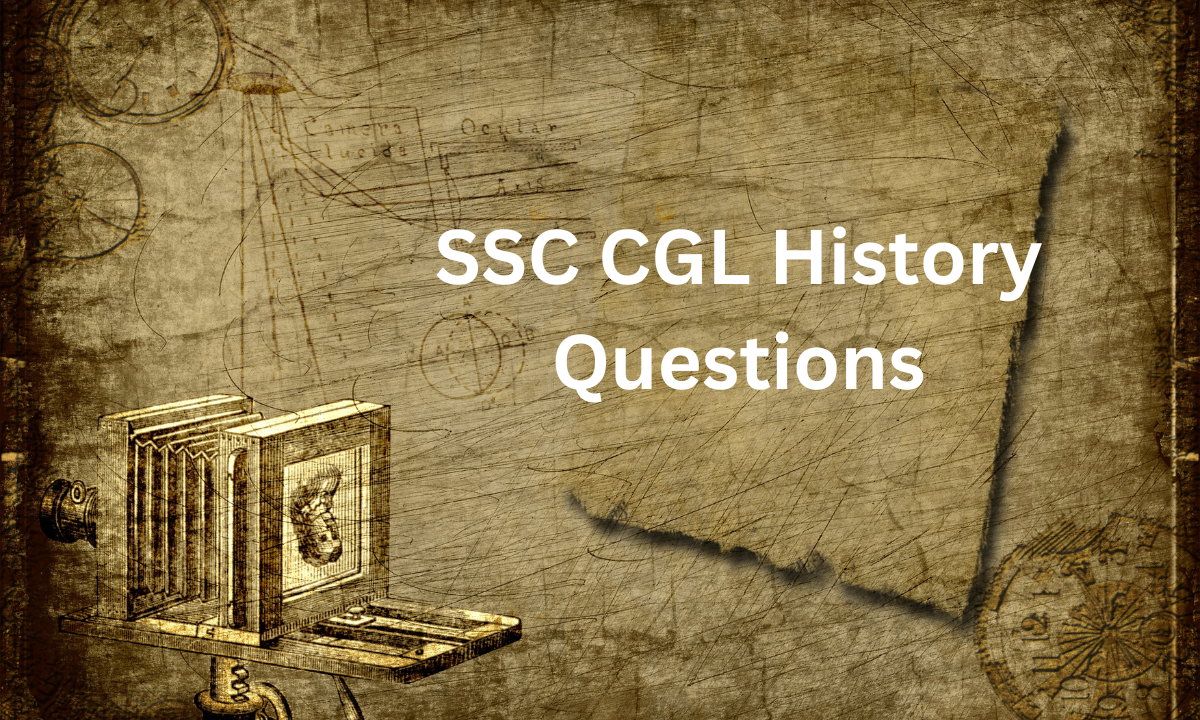
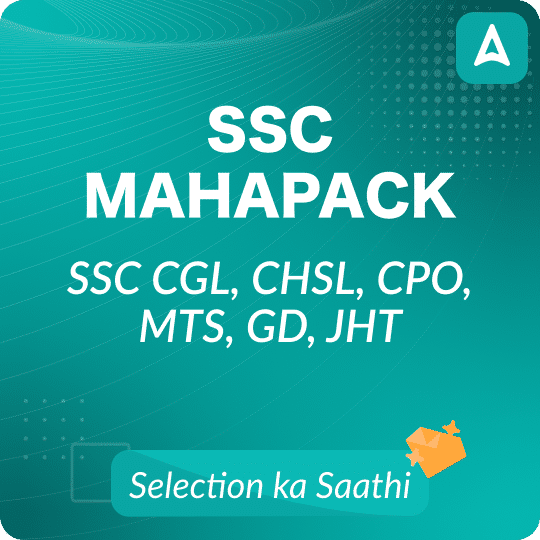

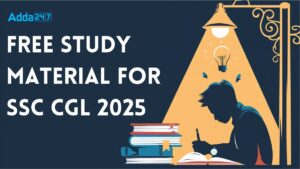 Free Study Material for SSC CGL 2025, Do...
Free Study Material for SSC CGL 2025, Do...
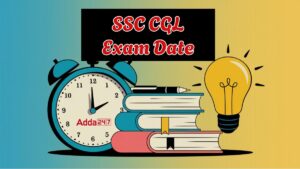 SSC CGL Exam Date 2025, Complete Exam Sc...
SSC CGL Exam Date 2025, Complete Exam Sc...
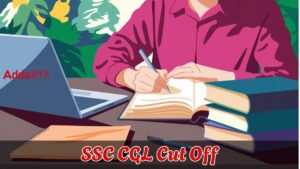 SSC CGL Cut Off 2025, Check Post- Wise C...
SSC CGL Cut Off 2025, Check Post- Wise C...


